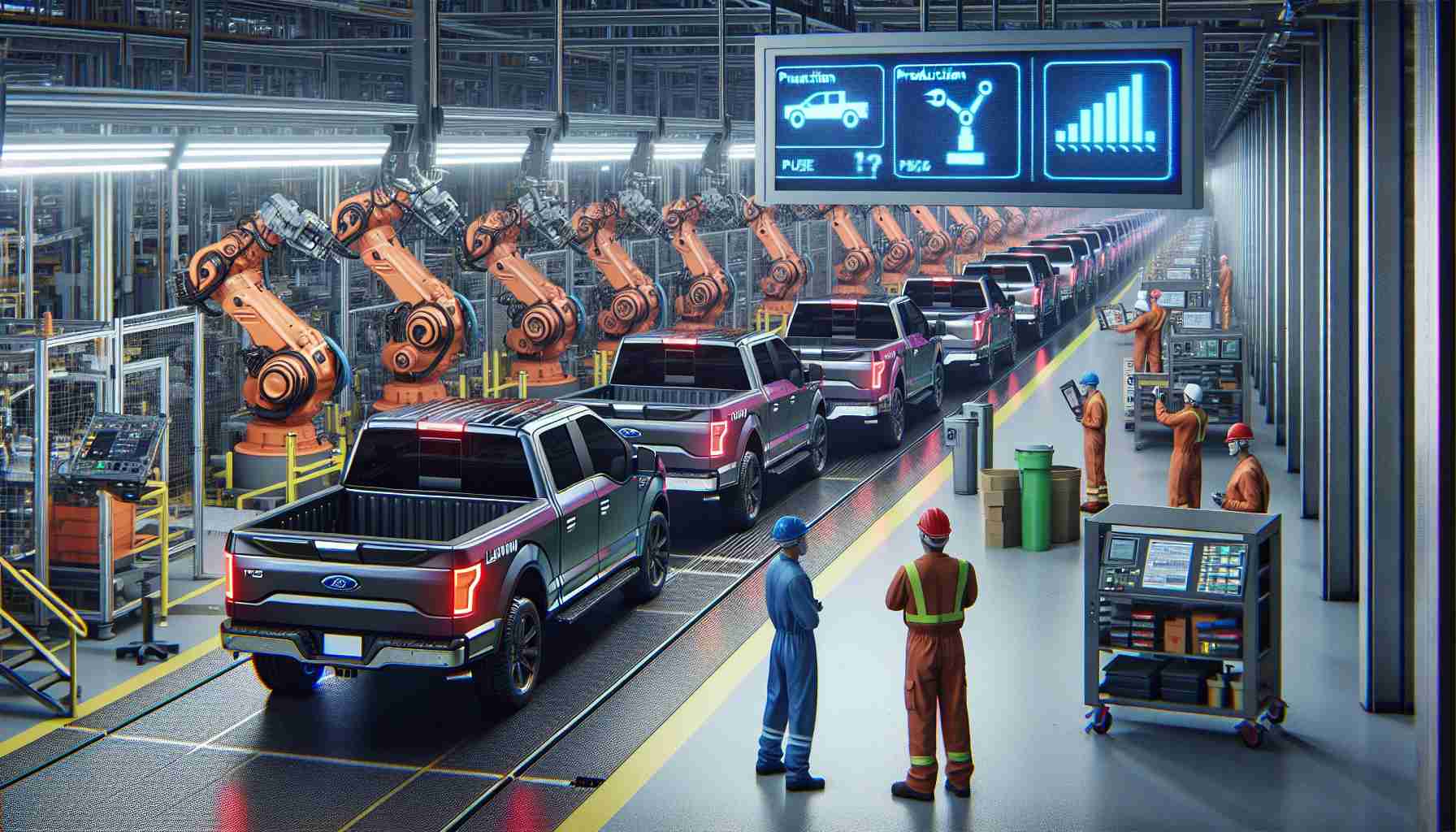In a strategic move, Ford Motor Company announced a temporary halt in manufacturing its acclaimed F-150 Lightning electric pickup truck, effective from November 15, 2023, to January 6, 2024. This action comes as the renowned automaker grapples with a downturn in consumer interest in electric vehicles (EVs).
Ford is set to furlough approximately 730 hourly employees during this period, although not all workers will be affected throughout the entire pause. This decision aligns with Ford’s ongoing strategy to reassess its production in pursuit of a profitable balance between sales and manufacturing. The F-150 Lightning, which gained accolades by winning MotorTrend’s Truck of the Year 2023, initially debuted two years ago as part of Ford’s ambitious venture into the EV market. However, sluggish sales prompted the company to reduce its price significantly last year.
In their recent financial report, Ford disclosed a $1.2 billion loss for the Model e, its dedicated EV division, during the third quarter. The automaker anticipates total losses of $5 billion in 2024 for this unit, which is partly due to competitive pricing pressures within the industry.
As an alternative strategy, Ford is redirecting focus toward hybrid vehicles, including a new family of three-row hybrid SUVs, as a means to accelerate consumer adoption of more affordable options with extended driving ranges. Meanwhile, the broader market reflects a decrease in EV prices, coming down notably from an average of $65,000 two years ago to $56,648 in May, as reported by Kelley Blue Book. This pricing shift underscores the changing dynamics in consumer demand and inventory accumulation in dealerships.
The EV Conundrum: Are Electric Vehicles Still the Future?
In a world tirelessly pursuing green alternatives, the electric vehicle (EV) revolution promised a cleaner future. Yet, recently, seismic shifts in the automotive industry have prompted introspection: Is the hype around EVs waning, and what does this mean for the everyday consumer?
Ford’s temporary cessation of F-150 Lightning production sheds light on the underlying challenges facing the EV market today. While this decision primarily reflects issues at Ford, it also reveals broader trends and questions that aren’t just affecting companies but impact daily lives, communities, and global markets.
Community Impact: Jobs and Economies at Stake
While Ford’s production halt results in furloughing 730 employees, the ramifications extend beyond the factory floors. Entire communities connected to the EV supply chain may feel the ripple effects. From battery suppliers to local businesses dependent on worker spending, the pause could lead to temporary economic slowdowns, particularly in regions heavily reliant on automotive manufacturing.
On a macro level, countries that have heavily invested in EV technologies and infrastructure might question the stability of these new energy economies. Regions pushing legislation for greener alternatives will need to reassess timelines and strategies to ensure local economies remain resilient.
Advantages and Disadvantages of the EV Pivot
The decline in EV enthusiasm isn’t without its benefits. Reduced demand can lead to lower raw material extraction, giving ecosystems a potential respite from mining activities. It also provides manufacturers a moment to realign focus towards building more efficient, cost-effective vehicles.
However, the disadvantages loom large, primarily driven by consumer skepticism over range anxiety, charging infrastructure, and battery reliability now gaining more traction. Perhaps the most pressing question concerns pricing: Can EVs become affordable for the average consumer?
The Hybrid Solution: A Bridge or a Truce?
Ford’s renewed focus on hybrids might illustrate an interim solution. Hybrids offer a blend of traditional and electric virtues, providing familiarity while reducing carbon footprints. But will consumers view them as the best of both worlds, or as a temporary compromise?
Is the Falling Price of EVs a Boon or a Problem?
While decreased EV prices might seem advantageous for consumers, they raise significant concerns about market saturation and inventory overhang. The question arises: Are these price reductions a reflection of expansive competition or indicative of broader hesitancy to adopt EVs globally?
Exploring the Roots of EV Backlash
What exactly is driving the reluctance to transition fully to electric? Studies note that while environmental consciousness is on the rise, economic pressures and pragmatic issues linger. People are cautious about investments in new technology amid global economic uncertainties.
Related Issues and Discussions
How will these shifts impact policies and political debates around carbon reduction commitments?
Are we seeing a necessary adjustment period before a significant adoption increase?
For a deeper dive into related trends and industry changes, visit Ford, MotorTrend, and Kelley Blue Book.
As these discussions unfold, one thing remains crucial: fostering an open dialogue about future mobility and its sustainable development for societies worldwide. The journey to full-scale EV adoption may slow down, but it continues to be a pivotal part of our collective story for a cleaner, more sustainable future.






















